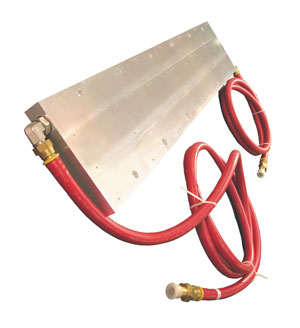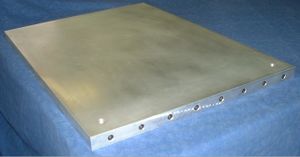Cooling Plates
In a world of compact designs with increasing power densities, Cooling Plates are satisfying demanding contact cooling requirements in applications as diverse as high-powered electronics, lasers, power drives, medical equipment, and military and aerospace. For high watt densities, when air-cooled heat sinks are inadequate, liquid-cooled cooling plates are the ideal high-performance heat transfer solution.
Cooling plate graphs compares the normalized thermal resistances of different cooling plate technologies, enabling thermal performances to be compared independently of the cooling plate part geometries. The lower the thermal resistance, the better the performance of the cooling plate. All cooling plate performances are compared using water as the cooling fluid.
Coolant compatibility with cooling plate wetted surfaces must be considered when selecting a cooling plate technology. A copper fluid path is compatible with water and most common coolants. Aluminum offers excellent performance with ethylene glycol and water solutions (EGW), oils, and other fluids, but is not compatible with untreated water. A stainless steel fluid path is recommended when using deionized water or other corrosive fluids within a cold plate.

